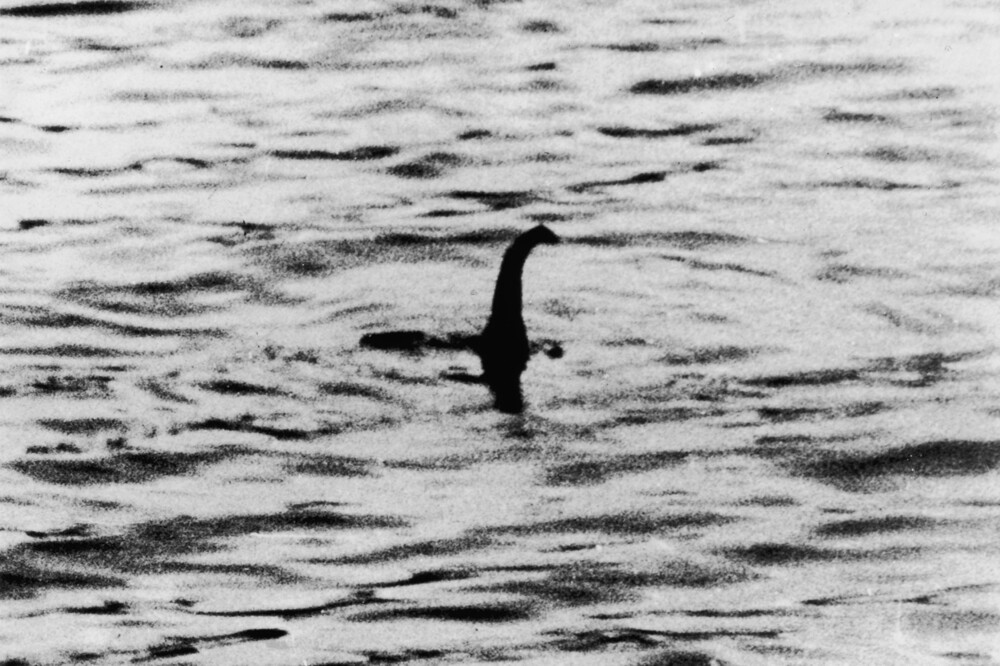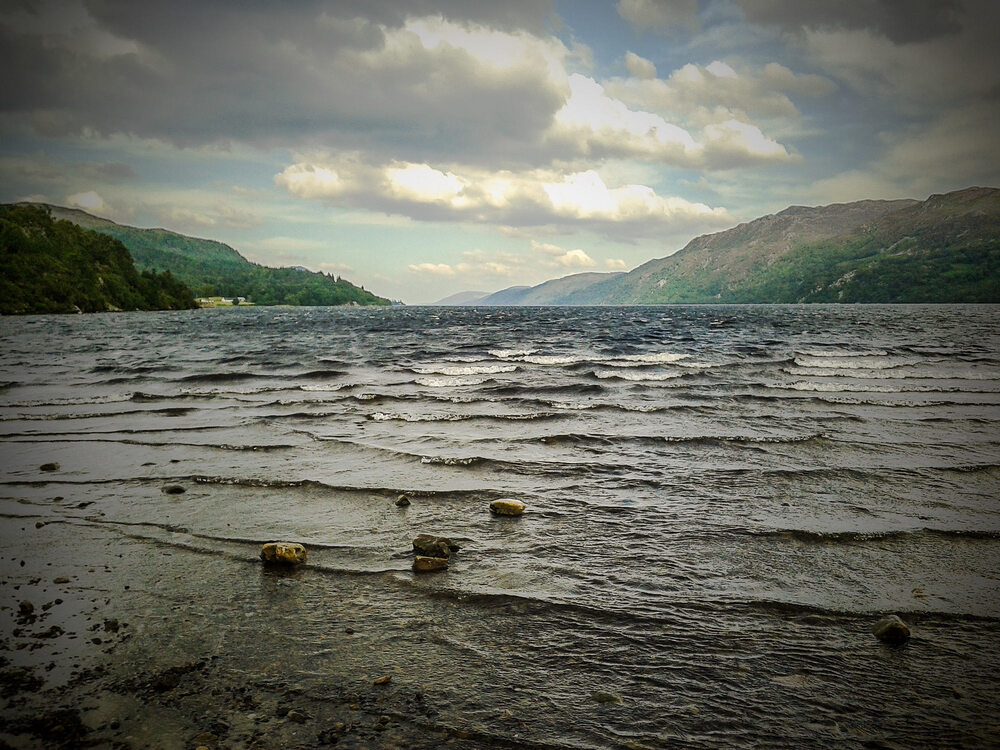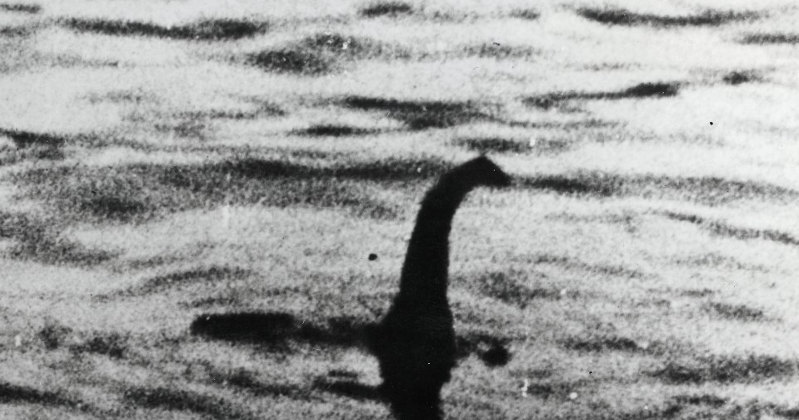
For centuries, people have speculated and argued about sightings of the Loch Ness Monster. The Loch Ness Monster (also known as "Nessie") is an alleged sea creature believed to live in the depths of Scotland's Loch Ness lake. Today on "Uncovering Mysterious Legends and Lore," we'll take a closer look at this well-known Loch.
Despite never being definitively proven, numerous credible sightings of this mythical creature have made it a source of fascination for many. Here are some key points to consider when researching Loch Ness Monster sightings:
The Origins

The Loch Ness Monster's Mysterious Origins
Tales of strange creatures lurking in Scotland's deep and mysterious lochs have been told since the dawn of time. The Loch Ness monster is unquestionably one of the most famous monsters in history.
The entomology behind its name - "loch" - is frequently overlooked.
The term "loch" simply means "lake" or "loch" in Scottish Gaelic. The word can be traced back to Old Irish "locha," which was derived from Proto-Celtic *lewkos. This linguistic history reveals that native Scots have recognized the deep body of water known today as Loch Ness since ancient times.
But why is this important? Understanding the historical context of a phrase can help us understand how people first perceived an object, such as a lake full of unknown creatures. In other words, by understanding how far back "loch" goes, we gain perspective on how long ago Scots may have noticed something unusual happening in their bodies of water and speculated about its source.
Whether you believe in the existence of Scotland's famous monster or not, it is undeniable that delving into its entomological roots can be a fascinating journey into the past. Understanding where the word "loch" comes from helps us understand why stories about strange creatures living in lakes are still popular today, from uncovering ancient language to piecing together local folklore.
Although sightings have occurred throughout history, it wasn't until 1933 that an image appeared that piqued the public's interest in this enigmatic being.
The first known sighting was in 565 AD, when Saint Columba, a Christian missionary sent to Scotland, was said to have encountered a large water beast while crossing the River Ness near Inverness. Despite the initial fear among his companions, Columba commanded the beast to retreat, and it miraculously obeyed. This is one of the earliest documented accounts of what became known as "Nessie," a nickname given by locals that has endured for centuries.
In the years since, there have been numerous reports from witnesses who claim to have seen something strange in or near Loch Ness. Most described a long-necked creature that resembled a reptile, but no compelling evidence could be found until 1933, when an infamous photograph captured an aquatic animal with a long neck emerging from the murky waters of Loch Ness. Though widely dismissed as a forgery or misinterpretation of natural phenomena, this image served as both inspiration and a reminder that something mysterious may still exist deep beneath the earth's surface today.
Since then, there has been a lot of speculation about possible explanations for these sightings, which range from misidentification of ordinary animals like otters or seals to surviving dinosaurs like plesiosaurs and even extraordinary paranormal activity like ghostly apparitions or extraterrestrials. Whether true or not, stories about this legendary creature continue to captivate people all over the world, making "Nessie" one of Scotland's most enduring legends.
Modern Sightings

The Surgeon's Photo and the Resurgence of Loch Ness Monster Sightings
Sightings of the enigmatic Loch Ness Monster have captivated audiences all over the world since the 1930s. With the exception of a few fringe believers, many dismissed the "Nessie" phenomenon as a myth. Until 1933, when a London surgeon named Robert Kenneth Wilson made a surprising discovery.
Wilson captured what he described as "the closest approach to a dragon or pre-historic animal that I have ever seen"* on film while on an expedition to find evidence of any living creature in Scotland's Loch Ness. This photograph, dubbed "the Surgeon's Photo," sparked renewed interest in discovering what might be lurking beneath the surface of Loch Ness.
Soon after its release, newspapers across the United Kingdom carried articles about the Surgeon's Photo, as well as reports from other witnesses who claimed to have seen something large swimming near Urquhart Castle on the loch. People were drawn to this remarkable image in particular because it appeared to capture something extraordinary beneath the water's surface. In addition to being credited with reigniting public interest in this legendary creature, this photograph has become one of the most iconic images associated with Nessie mythology.
Despite numerous attempts by researchers over several decades to prove conclusively that an ancient monster does indeed inhabit Loch Ness, no absolute proof has yet been discovered. Nonetheless, new technology and growing curiosity are bringing us closer to learning more about this enduring aquatic legend.
"The Surgeon's Photo," Robert Kenneth Wilson's Enduring Legacy
Robert Kenneth Wilson was the doctor who took "the Surgeon's Photo," a legendary photograph of the Loch Ness Monster. The iconic photograph was taken on April 19, 1934, and its authenticity has been the subject of much debate over the years. However, many people are unaware that Wilson took the photograph, and his story is truly remarkable.
Wilson was born in 1882 in London to an upper-middle-class family. He went to the University of Edinburgh to study medicine before returning to London to work as a general practitioner. Despite his success in this field, he had another passion: natural history. Wilson was particularly fascinated by cryptids, which are mythical creatures such as Bigfoot and the Loch Ness Monster that are said to inhabit specific areas around the world.
In 1933, he decided to travel to Scotland in the hopes of photographing one of the mythical creatures said to live in Loch Ness Lake. His efforts were rewarded when he captured "the Surgeon's Photo," which became one of the most famous images associated with Nessie sightings. Despite numerous debates over its veracity, one thing is certain: without Robert Kenneth Wilson's dedication, we would not have this incredible piece of history today!
Aside from its legendary status as proof of an unidentified creature living in Loch Ness, "the Surgeon's Photo" is also a testament to Wilson's lifelong dedication to science and exploration. His legacy continues today through television shows featuring monsters such as "Finding Bigfoot" or even blockbuster films like "Jurassic Park". So, the next time you hear the phrase "the Surgeon's Photo," remember Robert Kenneth Wilson—the man who captured our imaginations with this enduring mystery!
Scientific Investigations
Various scientific expeditions, including Operation Deepscan, have been launched over time in an attempt to uncover more evidence regarding these encounters with unknown creatures in the lake (1987). Unfortunately, none of these investigations were successful in proving or disproving any theories about life living beneath the ocean's murky depths.
Various scientific expeditions have been launched in an attempt to uncover more evidence about what might be lurking beneath the surface. The most notable instance was Operation Deepscan in 1987. This expedition used twenty-four boats outfitted with fifty sonar beams to scan the entire length of the loch at the same time. Unfortunately, this investigation was unable to provide concrete evidence or disprove any theories about life in Loch Ness.
Other attempts to investigate these mysterious events have occurred since then. Over 160 volunteers took part in a conservation project in 2018 that used underwater cameras to film the loch bottom and track movement within it. However, no definitive answer has been discovered as to whether or not there is something living in the deep waters of Loch Ness, leaving many questions unanswered and much speculation unresolved.
For the time being, it appears that we will have to wait and see if further investigations into this phenomenon reveal anything more about the mysteries that lie beneath Scotland's Loch Ness Monster.
Popular Culture Phenomenon
For centuries, reports of strange sightings in Scotland's most famous lake have piqued the interest of people all over the world. It's no surprise that the Loch Ness Monster (or "Nessie"), a mysterious aquatic creature, quickly became an internationally recognized figure. While people are divided on whether or not such a legendary beast exists, one thing is certain: its place in popular culture has grown steadily over time.
Books, films, and even theme park attractions have been created to further explore and celebrate the legacy of this mythical creature, adding to its mysterious appeal and fueling curiosity about these unique sightings at Loch Ness. Even though various research efforts over the years have never been able to conclusively prove Nessie's existence, enthusiasm has not waned.
In fact, one could argue that this cultural phenomenon has become firmly ingrained in our collective imagination, providing us with an exciting opportunity to discover something extraordinary down by the banks of this famous Scottish loch. As we continue our search for answers, it appears that stories about Nessie will live on in the hearts and minds of future generations.
Overall, it appears unlikely that we will ever find conclusive proof that the legend lives on at the bottom of Loch Ness, but that hasn't stopped us from wanting answers about this centuries-old mystery, which is just as fascinating today as it was five hundred years ago!